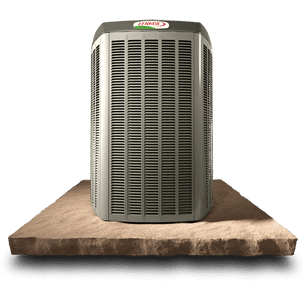If you’ve got a central HVAC system in your Houston, Texas home, you’re not alone. Countless homeowners throughout the region have heating and cooling equipment that’s only capable of creating and maintaining a single, uniform temperature all throughout the building. Now, however, it’s possible to streamline these setups to save money and get customized comfort. Read on to find out more about what multizone HVAC systems are and how they work.
There Are Several Types of Multi-Zone HVAC Systems
There are multiple ways to configure HVAC systems to provide different levels of service to different building areas. For instance, many two-story homes have two separate HVAC systems installed. These are controlled by two separate thermostats, with one thermostat installed on the upper floor of the building and the other installed in a central, downstairs area. Each thermostat and each HVAC system can be used and controlled independently of the other.
For the typical home that has just a single central HVAC unit, zoning is accomplished by dividing the building into separate service areas or zones. Each zone has its own thermostat that can be adjusted according to the immediate needs of the area. This way, if a room is completely unoccupied, there’s no need to heat it up or cool it down.
HVAC Dampers Make Zoning Possible in Central HVAC Systems
When central HVAC systems are broken down into individual service areas, these service areas are known as zones. Some homes have dual-zone HVAC systems with just two service areas, and others have a multizone setup. HVAC dampers make it possible for a single central heater and air conditioner to service each zone differently.
Dampers are installed throughout a home’s existing ductwork to section each zone off. If one area has already reached the temperature set at its respective thermostat, the damper for this area will close, and conditioned air will be routed to other areas. When any zone within the building requires heated or cooled air, the damper within its section of ducting will open to let conditioned air pass through.
HVAC Dampening Technologies Are Guided by a Central Control Box
Automatic HVAC dampers are typically guided by a central control box. The sensors in this box pick up signals from individual thermostats. Thermostats in zones that have yet to reach their set temperatures send out “calling” signals. Thermostats in zones that are already at users’ preferred temperatures send out “satisfied” signals. The control box governs the opening and closing of HVAC dampers upon receiving these communications.
Air Pressure Mitigation Strategies Are Employed to Limit System Stress
Using HVAC dampers to block the flow of conditioned air when it isn’t needed is somewhat similar to manually closing HVAC air vents. However, when you close HVAC air vents in your home, you’re placing a tremendous amount of stress on your heating and cooling equipment. Closed vents cause air pressure to build within HVAC ductwork, and this excess pressure causes extra wear.
When HVAC dampening technologies are used to create a multizone system, air pressure mitigation strategies are employed. Some companies install bypass air ducts so that extra air has a way to escape. Others mitigate air pressure by increasing the size of select ducts throughout the ducting system.
Why Manual HVAC Dampers Aren’t Ideal
For a relatively low cost, it’s possible to create a dual-zone HVAC system by having manual dampers installed. Homeowners can manually open and close these dampers to strategically guide airflow. This is one way to limit conditioned air in spaces that don’t need it while ensuring that warm or cooled air gets routed to other areas.
However, manual HVAC dampers don’t come with the same air pressure mitigation strategies that automatic HVAC dampers do. As such, they should never be fully closed. There’s also a slight learning curve with manual dampers. It often takes time for homeowners to learn how to use this equipment effectively. It’s also common for homeowners to make damper adjustments and then forget about them. You might have your air conditioner or heater running to no effect for quite some time before remembering that your dampers need to be adjusted.
The Benefits of Having Your HVAC System Zoned
Multizone HVAC systems are far more efficient than standard central heating and air. With multizone systems, homeowners don’t have to spend money to heat or cool rooms that are unoccupied. They can also streamline temperatures throughout the building to suit the unique needs of each occupant. Best of all, creating a multizone system with automatic HVAC dampers doesn’t place undue stress on heating and cooling systems.
Since 1984, [company_name] has been providing reliable heating and cooling services to residents of the greater Houston, Texas area. We also provide indoor air quality services and HVAC maintenance agreements. If you’re interested in having your central HVAC system zoned, we’ve got you covered. Get in touch with us today to get started.
The post How a Multizone HVAC System Provides Custom Heating and Cooling appeared first on Texas Air Authorities | www.texasairinc.com.

